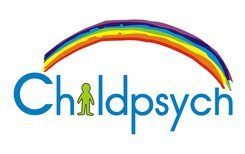Reading up about ADHD or ADD can be rather confusing. Perhaps your child daydreams a lot at school and is easily distracted? Maybe he fidgets constantly. You might wonder if he has Attention Deficit Hyperactivity Disorder (ADHD). Or is it Attention Deficit Disorder (ADD)?
Is there a difference?
Many people use the terms to mean the same thing — and that’s sometimes correct. But not always.
ADD is a type of ADHD that doesn’t involve constant movement and fidgeting. But it’s a blurry distinction. The confusion dates to 1994. That’s when doctors decided all forms of attention-deficit disorder would be called “attention-deficit/hyperactivity disorder,” even if the person wasn’t hyperactive.
Which term is right for your family to use depends on your child’s specific symptoms and diagnosis. It’s important to talk with an experienced mental health provider to make sure your child gets the right diagnosis.
Daydreaming or Fidgeting?
ADHD is a brain-based disorder. It can interfere with your child’s everyday activities at home and at school. Kids who have it have trouble paying attention and controlling their behavior, and are sometimes hyperactive.
Before a child is diagnosed, you will want to note their symptoms.
Here are the signs to look for:
- Inattention: Includes disorganization, problems staying on task, constant daydreaming, and not paying attention when spoken to directly.
- Impulsivity: Includes spur-of-the-moment decisions without thinking about the chance of harm or long-term effects. Your child may act quickly to get an immediate reward. She may regularly interrupt teachers, friends, and family. Sometimes kids with ADHD simply give any answer to a homework item, without having thought it through.
- Hyperactivity: Involves squirming, fidgeting, tapping, talking and constant movement especially in situations where it’s not appropriate.
Mental health professionals use the Diagnostic and Statistical Manual of Mental Disorders (DSM) to diagnose all psychiatric conditions, including ADHD. The latest version divides it into three types:
- ADHD predominantly inattentive presentation (what used to be called ADD)
- ADHD predominantly hyperactive-impulsive presentation
- ADHD combined presentation
Your child’s diagnosis will depend on their specific symptoms.
ADHD Predominantly Inattentive Presentation (ADD)
Kids with this condition aren’t hyperactive. They don’t have the high energy level seen in others with ADHD. In fact, children with this form may seem shy or “in their own world.”
ADD is diagnosed if a child under age 16 has 6 or more symptoms of inattention (5 or more for older teens) for at least 6 consecutive months but no signs of hyperactivity or impulsivity.
The symptoms include:
- Trouble paying attention (easily sidetracked)
- Doesn’t like or avoids long mental tasks (such as homework)
- Trouble staying on task during school, at home, or even at play
- Disorganized and seems forgetful
- Doesn’t appear to listen when directly spoken to
- Doesn’t pay close attention to details
- Loses things often
- Makes careless mistakes
- Struggles to follow through with instructions
Children with this type of ADHD may go undiagnosed because the symptoms may be chalked up to daydreaming or may simply be missed in a busy classroom.
ADHD Predominantly Hyperactive-Impulsive Presentation
Children with this form of ADHD have tons of energy and are constantly moving in a way that causes problems. It’s diagnosed if a child under age 16 has 6 or more hyperactive/impulsive symptoms for at least 6 months (5 or more for older teens). This form is more noticeable than the inattentive type.
Symptoms include:
- Blurting out answers before a question is finished
- Constantly interrupting others
- Trouble waiting his turn
- Talks too much
- Fidgeting, tapping, and squirming
- Gets up when it’s not appropriate (such as when the teacher is talking or in the middle of dinner)
- Running or climbing in inappropriate situations
- Unable to play quietly
How is ADHD Treated?
The symptoms of ADHD can be managed and associated difficulties can be meaningfully reduced.
For preschool-aged children (4-5 years old):
First Line Treatments
Behaviour therapy, implemented by an experienced psychologist or therapist should be prescribed as the first step in treatment.
 Behavioural approaches including parent training, classroom management and peer interventions have all been shown to be successful in supporting children with ADHD. In behavioural approaches, professionally trained psychologists work directly with the parents and/or teachers to implement behaviour interventions at home and at school. For children and adolescents with ADHD -Combined Presentation, these interventions focus on reducing impulsive and disruptive behaviours (e.g., interrupting, getting out of their seat at inappropriate times, blurting out) as well as improving planning, organization, time management, and homework management.
Behavioural approaches including parent training, classroom management and peer interventions have all been shown to be successful in supporting children with ADHD. In behavioural approaches, professionally trained psychologists work directly with the parents and/or teachers to implement behaviour interventions at home and at school. For children and adolescents with ADHD -Combined Presentation, these interventions focus on reducing impulsive and disruptive behaviours (e.g., interrupting, getting out of their seat at inappropriate times, blurting out) as well as improving planning, organization, time management, and homework management.Second Line Treatments
- Medication may be prescribed if the behaviour interventions do not bring about significant improvement.
- In areas in which behavioural treatments are not available, the risks of starting medication at an early age must be weighed against the harm of delaying diagnosis and treatment.
For school-aged children and adolescents (6-18 years old):
First Line Treatments
- Treatment guidelines generally recommend the use of both medication for ADHD and behavior therapy.
- Stimulant medications have been demonstrated to reduce symptoms of ADHD – combined presentation, such as disruptive and noisy behavior, and to improve impulse control, attention span, focus, and task completion.
- The school environment, school program and school placement may all form part of the treatment plan.
Additional Treatments to Consider
There is prelimanry evidence to suggests that the following strategies might be also help:
- Neurofeedback training
- Cognitive training
As a psychologist, I cannot emphasise enough the value of a balanced diet, good nutrition, and regular exercise for children and adolescents with ADHD or ADD.
For more information about helping your child with ADHD or ADD, contact Anel Annandale at 083 711 5267 or via email at anel@childpsych.co.za.


My grandson is 6 very hyper and concertration wen doing school tasks easily distracted and like u mention always busy and behavior no respect and does not like commands and also u have to tell him millions of times the same thing as far as his listening skills are and he drives u crazy very busy boy I’m not a fan of ritelin for my son took it for most of school years, Concerta OK and the staretta I’m not sure I wud prefer no medication another way out
Hi Ana, I hear you. Medication is such a contentious issue. For some kids it works really work with virtually no side effects. While other kids do suffer side effects. It’s a difficult call. For me, the most important factor is always the child’s self-esteem. If I child is starting to feel bad about himself because he is not coping at school or socially, then I would say it’s time to try the medication. Some alternative “natural” supplements seem to help a little (sometimes) but are not as effective as the meds. Cognitive Behaviour Therapy also plays a VERY important role as it teaches kids the tools that they will need to help manage their own ADHD / ADD.